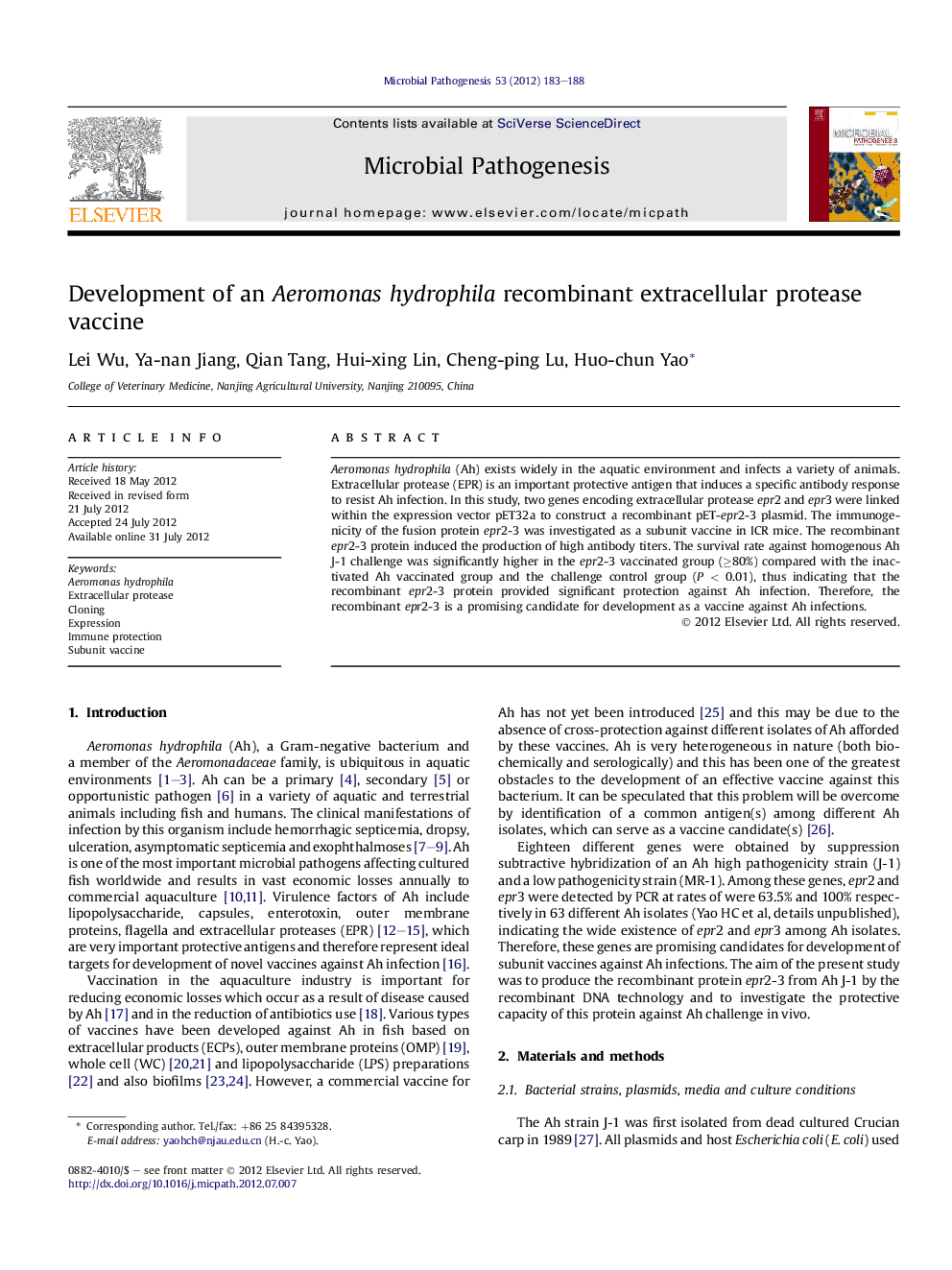| Article ID | Journal | Published Year | Pages | File Type |
|---|---|---|---|---|
| 6136336 | Microbial Pathogenesis | 2012 | 6 Pages |
Aeromonas hydrophila (Ah) exists widely in the aquatic environment and infects a variety of animals. Extracellular protease (EPR) is an important protective antigen that induces a specific antibody response to resist Ah infection. In this study, two genes encoding extracellular protease epr2 and epr3 were linked within the expression vector pET32a to construct a recombinant pET-epr2-3 plasmid. The immunogenicity of the fusion protein epr2-3 was investigated as a subunit vaccine in ICR mice. The recombinant epr2-3 protein induced the production of high antibody titers. The survival rate against homogenous Ah J-1 challenge was significantly higher in the epr2-3 vaccinated group (â¥80%) compared with the inactivated Ah vaccinated group and the challenge control group (P < 0.01), thus indicating that the recombinant epr2-3 protein provided significant protection against Ah infection. Therefore, the recombinant epr2-3 is a promising candidate for development as a vaccine against Ah infections.
⺠Extracellular protease genes epr2 and epr3 were linked in an expression vector. ⺠Recombinant epr2-3 protein expression was analyzed by SDS-PAGE and Western blotting. ⺠The recombinant epr2-3 protein induced antibody production in ICR mice. ⺠Recombinant epr2-3 provided Parabramis Pekinensis with significant protection against A. hydrophila infection. ⺠Recombinant epr2-3 is a promising candidate for subunit vaccine development.
